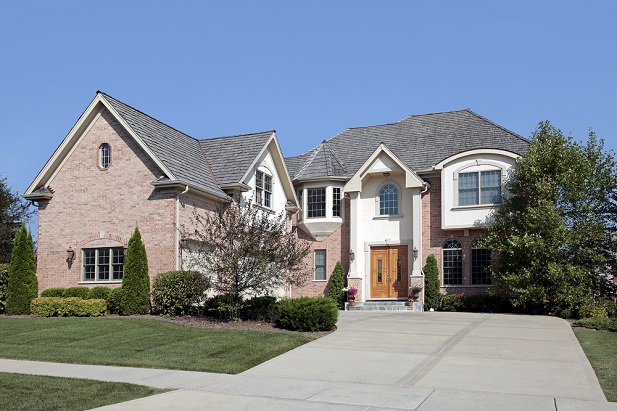 Many retirees are having a tough time extricating themselves from the massive homes that seemed such a good idea at the time—but as age and infirmities encroach, now appear to be folly. (Photo: Shutterstock)
Many retirees are having a tough time extricating themselves from the massive homes that seemed such a good idea at the time—but as age and infirmities encroach, now appear to be folly. (Photo: Shutterstock)
A decade and a half ago, Big Homes were the Big Thing as retirees rushed to sink lots of money into the massive Sunbelt homes they perhaps had dreamed of for years. Real estate was booming and it was all too easy to follow that dictum memorialized on cutesy plaques in souvenir shops: “House—a hole in the ground surrounded by wood into which one pours money.”
That's turned out to be literally true in many cases, according to a Wall Street Journal report that says that many of those same retirees are having a tough time extricating themselves from the massive homes in lush locations that seemed such a good idea at the time—but as age and infirmities encroach, now appear to be folly.
It's not just that the homes are large, often some distance from the nearest conveniences (supermarkets, hospitals, entertainment) and fraught with caretaking chores that now may be beyond the abilities of their aging owners. It's also that those owners aren't finding buyers, because younger people Just. Aren't. Interested.
So at a time in their lives when they might actually need to cash in on their multimillion-dollar dream homes, lots of retirees find themselves waiting for any show of interest as those houses sit on the market, creating their own glut even as prices are slashed—sometimes by as much as half, leaving the owners literally in the hole after spending so much to build them.
Younger people have loads of reasons not to be charmed by the vaulted ceilings and chef-ready kitchens of homes perched on mountaintops or hugging beaches that promised solitude once but now cry of isolation. And it's tough for people in their 70s and 80s to keep up with even the most basic of regular chores, such as hauling the trash cans up a steep 100-yard driveway or doing routine pool maintenance—not to mention that stairs, however beautiful and curving, may now present an insurmountable obstacle to residents aged beyond their use.
A report from Business Insider highlights numerous reasons that younger people might not want to saddle themselves with such beautiful albatrosses. Down payments, student debt and preferences for rentals in cities coupled with vacation home getaways have all contributed to what the report characterizes as “millennials wiping out starter homes.”
In the second quarter of 2018, the report says, first-time homebuyers needed 23 percent of their income to afford an entry-level home; that was up 2 percent from the year before. If you need that much, it's not a step too far to decide to continue to rent and to save up for a bigger, grander home—if not a multimillion-dollar mansion far away from everything else—and that's what many millennials are doing.
And that is those among them who can actually manage to save up a down payment. Too many others are so burdened by student debt that buying a house is a foggy image off in the distant future. And lots of young homebuyers underestimate what it will cost them to keep a house, making it less likely they'll bite off more than they can chew the next time they go home-shopping.
Factoring in their concerns over the environment—the energy footprint of a big house and a long commute—and their disinclination to own cars, as well as the need to hold down multiple jobs or have one or more side hustles—and it looks as if those mega-residences are liable to stay on the market for quite a while longer.
READ MORE:
Two blue-collar industries beat white collar for retirement readiness
© 2025 ALM Global, LLC, All Rights Reserved. Request academic re-use from www.copyright.com. All other uses, submit a request to [email protected]. For more information visit Asset & Logo Licensing.







